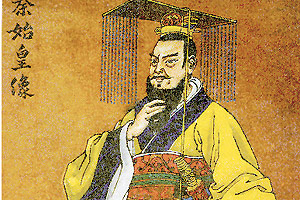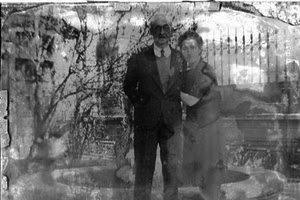After a long period of primitive society, around 2200 B.C., the first dynasty appeared, the Xia or Hsia-ch’ao Dynasty, supposed to have been located near the middle course of the Yellow River. It is worthy noting that for a long time, only legendary oral references to the Xia Dynasty were available. This led historians to assure that the first historical dynasty was the Shang Dynasty. However, the recent finding of some archaeological deposits, have shown the existence of a Chinese bronze culture linked to the Xia.
According to Chinese chronicles, this Dynasty lasted until the 16th Century B.C., was hereditary and around 20 kings ruled in its span.
– Shang o Chang Dynasty (1766 – 1027 B.C. aprox.): After a series of tribal wars, this Dynasty prevailed, stretching from Mongolia to the Yangtze Valley. Its capital was Anyang. Shang society was highly advanced and governed by a hereditary aristocratic class. The king was the supreme authority, and he presided a military nobility and chose territorial governors. Between this aristocratic class and the people was a layer of educated priests.
The economy was based on agriculture that included the growing of: millet, wheat and barley.
They mastered bronze metallurgy and were also famous for their jade carvings and silk weaving.
The cult of dead kings held sway and there were occasional human sacrifices.
The Shang Dynasty was finally weakened by neighboring peoples and replaced by the Zhou Dynasty.
– Zhou o Chou o Cheu Dynasty (1027-256 B.C. aprox): This was the last of the king dynasties before the imperial dynasties. The capital was set up in Xi’an and the Kingdom was divided in several states controlled by a local governor who followed central orders. With time, these states grew ever more independent as the power of the dynasty progressively waned. Cities grew and a merchant class formed that used money instead of barter.
This period was witness to a great cultural development: thinkers such as Confucius -creator of Confucianism (see inbox) and Lao Tzu or Tao Te Ching -creator of Taoism, which worships nature spirits and ancestors- appeared in this period; a great number of great books were written, including the I Ching (or «Book of Changes»), the Shijing (or «Book of Poems») among others. The Zhou Dynasty came to an end in 256 B.C., when the central government lost power and the kingdom was separated into seven great states.
– Ch’in o Qin Dynasty (221 – 207 B.C. aprox.): The seven great states fought each other for control of China. Finally, the Chi’n or Qin prevailed and their King, Cheng or Zheng established the first, highly authoritarian, empire (221 B.C.). He also had himself named Qin (or Chi’n) Shi Huang Di («First Sovereign Emperor in China).
The emperor carried out a series of administrative and economic measures, apart from promoting cultural unity. Among his most famous works is the building of the Great Wall of China, aimed at defending the empire from invasions. It was later extended and rebuilt by the following dynasties.
Due to the hard-line government and the heavy taxes, when the Emperor died in 207 B.C., a civil war broke out. This, added to the continuous threat posed by external invaders caused the fall of this dynasty and left the way clear for the Han Dynasty to get to power.








